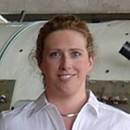HEALTHTECH: What kind of health conditions might astronauts experience in space travel?
MOYNIHAN: First, there are the normal, everyday human illnesses and injuries that can occur whether one is on Earth or out in space. Second are conditions that occur due to adaptation, like space adaptation syndrome, where a crew member may experience some symptoms upon first transitioning to microgravity. Third would be effects of the unique environment causing symptoms, such as high carbon dioxide levels if the CO2 scrubbers go down.
HEALTHTECH: What went into developing the virtual care program?
MOYNIHAN: At an average distance of 250 miles above the surface of the Earth, all medical care provided to our NASA crews while they are on board the International Space Station is by definition via telemedicine. Over the years, the medical diagnostic and therapeutic capabilities on orbit have increased, along with their complexity. This has driven us to strengthen and expand upon our telemedicine approach. We use training while the crew is still on Earth in the pre-launch time frame, our near real-time communication capabilities, and our exceptional remote guiders to help us guide the crew remotely to obtain medical imagery and data. We can obtain and downlink excellent quality data from diagnostic procedures such as ultrasound, optical coherence tomography (OCT) and fundoscopy.
READ MORE: Find out how healthcare organizations can benefit from a virtual care workshop.
HEALTHTECH: How did you assess potential healthcare and skill needs in space?
MOYNIHAN: We start with a concept of what we need, and how we would obtain it terrestrially. We’re always cognizant while putting a plan together about making sure that using the hardware will be an efficient use of time for the crew, that we consider what sort of supplies might be required or need to be resupplied as opportunities to manifest may be infrequent, and that we consider the mass impacts of launching the hardware initially. We don’t expect a crewmember to be fully proficient in doing a particular exam independently, but rather that they understand the general principles of using that piece of hardware and understand the basic directions that the remote guider will provide them. We have had, in many cases, remote guiders who were able to talk a crew member through a procedure that was never practiced terrestrially, with excellent results in the form of quality images being obtained and downlinked.












